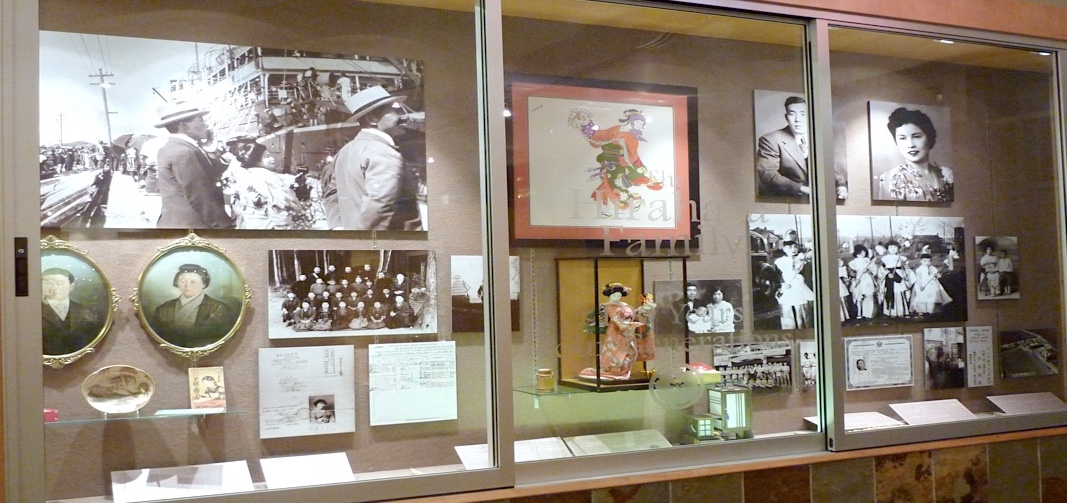
An exhibit about Japanese American history in Anaheim will be on display beginning in August at the Anaheim MUZEO Museum and Cultural Center. (Photo: Patti Hirahara)
As part of their internship work for the Anaheim Heritage Center, four students uncover a history that will forever be remembered.
By Patti Hirahara, P.C. Contributor
The history of the Anaheim Japanese pioneers has been unknown to many through the years, but due to a 2018 National Park Service Japanese American Confinement Sites grant, their legacy will now be told for the first time in an original exhibition set for Aug. 25-Nov. 3 at the Anaheim MUZEO Museum and Cultural Center.
The City of Anaheim will be presenting the story of an amazing testament of courage and determination by its Japanese American pioneers and their descendants before and after World War II, their experience in being sent to Poston, Ariz., and where Anaheim High School was the center of North Orange County education for this community.
With this in mind, the Anaheim Public Library’s Heritage Center worked with Anaheim High School’s Work-Based Learning Coordinator Mandy Johnson to recruit four Anaheim High School students to be interns for a six-week research project to identify and research Anaheim High School’s Japanese American student alumni.
A flyer was created utilizing my role as an Anaheim High School Class of 1973 graduate and a Japanese American legacy preservationist to recruit the students.
“In recruiting, we targeted junior and senior students in AP English and social science classes interested in research, history and journalism, and on the application, we asked students why they were interested in the opportunity and what skills they would bring to the project,” said Johnson.
“I was surprised that we had eight applicants, only because we advertised the position on pretty short notice. We were recruiting from a pretty small pool of students, but I was excited to see that we had applicants to choose from because it would mean that we were able to select the best candidates,” Johnson added.
Four students were selected as interns and began their orientation at the Anaheim Heritage Center @ The Muzeo on Feb. 1 under the supervision of Heritage Services Manager Jane Newell.
The students’ journey on why they wanted to be included in this new six-hour-a-week program shows their dedication in wanting to research their Japanese American alumni. This was especially true since it is the last semester of their senior year. It’s impressive how these amazing young women can be our voice to future generations.
The students — Gabriela Gonzalez Navarro, Natalie Olivares, Kassandra Priego and Vanessa Sanchez — each shared their feelings about this internship and what they learned.
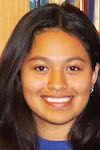
Gabriela Gonzalez Navarro
Gabriela Gonzalez Navarro is a reporter/photographer for Anaheim High School’s Anaheim Exclusivo newspaper. After graduation, she is considering Fullerton Community College in the fall, but has not yet decided on a major. One day, Navarro hopes to pursue a career where she is able to help in the community.
“I currently volunteer at the Anaheim Public Library as a teen volunteer. I love to be given the opportunity to incorporate myself into the community as much as possible. I wanted to be part of this internship because I feel keeping the community informed of their city’s heritage is something that I see a great value in doing. This internship gave me an amazing chance to ensure that the heritage of our community is not forgotten. Our heritage and history are important aspects that have lead the City of Anaheim and its people to where we have come today.”
In being a reporter/photographer for Anaheim Exclusivo, “I really enjoy taking photos for the articles rather than writing them. I like taking the time to find the perfect moment to photograph an action shot and have it become the featured image of the story for our paper.
“I do plan to write an article about this experience, as it is something that benefits the community since they will gain this information. I have also benefited a lot from this experience. I have learned so many skills that I will need as I further my education.”
For Navarro, the most interesting part of this project has been discovering the many connections these individuals may have to one another. With all the information she has gained from looking through the school yearbooks, Navarro found how drastically different the demographics of Anaheim High School have been through the years.
“I just want people to be aware of what these individuals went through. People of high school age, like my classmates, had to go through an experience like this, and I found that to be so crazy to think about from then to now,” Navarro concluded.
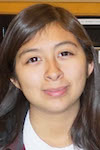
Natalie Olivares
Natalie Olivares is editor-in-chief of Anaheim High School’s Anaheim Exclusivo newspaper; president of her school’s Dual Language Academy Club, which promotes bilingual education; and a technician for Anaheim High’s Advanced Theater class and Performing Arts Conservatory. She is currently waiting to receive acceptances for college this fall and has decided to pursue a major in theater.
“As a senior, I need to compile the skills necessary to do research in college. I believe that this internship would be a fantastic opportunity for me to build my skills and discipline. Furthermore, I have always loved history and believe that all stories should be told no matter how small. This internship will not only benefit me, but also an entire community of people who have long been ignored, and I believe in helping bring their story to light.”
What Olivares found most interesting about this project is “how different Anaheim High School is now culturally and how quickly that culture can change. Even looking at the differences between the 1940s and 1950s, I am amazed at how different the student populations were.
“A surprising discovery I made was how integrated Japanese Americans were in the community, after the war, to advocate for their culture. Once the students were finally freed from the camps, they joined Japanese heritage groups to stay together and remind themselves and the world that they were just as important as everyone else. To me, it was such an astonishing show of pride, done in such an eloquent and peaceful way.
“I did find similarities in the way the Japanese community struggled to fit into American culture. The same way our minority students will pronounce a name to be more pleasing to the English tongue. Japanese American students would use Western names, even if it was their middle name, in yearbooks and enrollment forms, and I resonated with the need to fit in. It is the same today as we begin to pronounce our names properly with a Spanish tongue.
“What I hope that the people will learn about is what the Japanese Americans did to help shape our city and help build the City of Anaheim as we know it today. They loved Anaheim and Anaheim High School just as we do,” Olivares concluded.
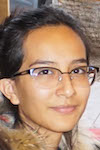
Kassandra Priego
Kassandra Priego is an Anaheim High School senior who is in music studio and plays piano. She feels fortunate to be selected for this internship. She is hoping to attend California State University, Fullerton, or California State University, Long Beach, and wants to major in communication disorders, where she plans to study about the symptoms, diagnosis and treatment regarding disorders that affect a person’s speech, language and hearing abilities.
“I feel that most times when we look back through the scope of history, we focus on the injustices done on minorities like African Americans, Hispanics or Latinos, but we often overlook the important role that Japanese Americans played in American history and the hardships they had to face as well.
“I have always had a passion for history and would love to uncover facts that have been buried in the past about Japanese Americans in my community. This research internship has been an amazing opportunity to educate myself about the role of Japanese Americans in Anaheim as well as to get the opportunity to inform others about this topic as well.
“I have been a student at Anaheim High School for my entire high school career and a resident of the city of Anaheim since I was in the first grade. I hold a lot of pride for my school and city and wish to bring to light the role of Japanese Americans in my community.”
For Priego, the most interesting part of her research was to learn about the stories of former Anaheim High School students.
“The Japanese American students of Anaheim High School were fighters: They were brave individuals who sought to make the best out of difficult situations even in the face of discrimination. They were filled with dreams, plans and goals, but the war changed all that. But despite their unjust treatment during WWII, they gave back to their communities once they returned home. Minority students today are fighters, too, who struggle as well, but learn how to pick themselves up in the face of diversity.
“It has been a privilege to be a part of bringing the lives of these Japanese American students to life as well as going to the same high school as these incredible Japanese American alumni who truly influenced our community in ways that will never be forgotten,” Priego concluded.
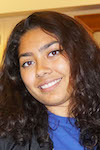
Vanessa Sanchez
Vanessa Sanchez is editor-in-chief of the Spanish portion of Anaheim High School’s Anaheim Exclusivo newspaper, a member of the National Honor Society, a senior representative for the school’s Dual Language Academy Club and a member of the Guiding Our Ladies With Dignity club. She is not yet certain as to what school she will be attending in the fall, but Sanchez plans on majoring in Spanish.
“History is my favorite subject, and I especially love learning about how big events affect people on a local level. This opportunity gave me the chance to research on how a decision I’ve only read about in books affected other minorities: Those who have grown up in this city and those who call Anaheim home, like me. I feel this internship allowed me to deepen my knowledge of journalism by researching the histories of our Japanese American alumni, and I enjoyed this opportunity very much.
“I think the most interesting part of this research has been looking through so many records, like newspaper articles. I have found it utterly amazing to find little tidbits of information and put what I have together, like pieces of a puzzle, and come up with a sketch of someone’s life.
“I also found how times have changed for the better in our community. With this research, I hope that people can find parallels between themselves and the Japanese American students, especially as minorities. The times, hair and clothes are, without a doubt different, but we are all so similar at the same time. No matter what the generation, we still had so much in common,” Sanchez concluded.
The interns’ research will be used to tell the story of the Japanese American students at Anaheim High School for the City of Anaheim’s exhibition entitled, “I Am an American: Japanese Incarceration in Time of Fear — The Unknown History of Anaheim’s Japanese Pioneers.”
The Japanese American community in Anaheim established businesses and a church prior to WWII, and Anaheim was attractive for these families to return and rebuild, with the city becoming a center for local Japanese American commerce and religion in Orange County during the 1960s.
The planned 5,000-square-foot exhibit will feature personal testimonials, artifacts and memorabilia, as well as give a first-hand look at the Poston, Ariz., Japanese American incarceration camp experience, which affected and devastated those in Anaheim and Orange County from 1942-45.
Navarro, Olivares and Sanchez will work to write articles for their student newspaper, Anaheim Exclusivo, about their experience, and this summer with Priego, they will have the opportunity to be Anaheim High School Student Ambassadors to share their knowledge about what they have learned during this internship experience.
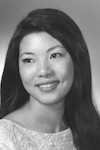
Patti Hirahara
Patti Hirahara, Anaheim High School Class of 1973
“For me, the highlight of my senior year was being Anaheim High School’s representative on the Broadway department store’s Youth Council and being named Seventeen Magazine’s National Youth Advisory Council representative for the Anaheim Broadway store.
“During those early years, I had no ambition to preserve the Japanese American legacy and just wanted to be considered an all-American student who was able to achieve in American society. Little did I realize how my goals and values would change due to an invitation I received in my senior year.
“My counselor, Maxine Neely, summoned me to her office one afternoon and showed me a letter that she had received from the Suburban Optimist Club of Buena Park, telling her about their annual Youth Recognition Night for high school seniors of Japanese ancestry. She said to me, ‘You should go to this, I really feel this is something you should be a part of.’
“So, I brought the letter home, and I accepted their invitation to attend this evening event at Knott’s Berry Farm with my parents. That evening, I was so amazed to see so many accomplished Japanese American students in one room at one time. I had never experienced anything like that before, and it made me realize that maybe I had been missing out on this experience to be part of my community.
“After graduation, I was fortunate to win second place in Seventeen Magazine’s Youth Advisory Council scholarship competition among 500 girls from across the country and was the only minority among the four national finalists. This made me proud to be able to represent the Japanese American community.
“Through the years, the numbers of Japanese American students increased and declined at Anaheim High School, but I am so happy that their achievements will now be noted and be part of Anaheim’s legacy.
“But for me personally, I am lucky to have found my roots in communicating with my relatives in Japan to this day, learning about Japanese culture and how to do business with the Japanese from Japan and being able to cook Japanese dishes at home.
“I wanted to share a part of our Japanese culture with these four students, so on their final day, I decided to treat them to a little graduation party. We went to the new Okayama Kobo Bakery on the Center Street Promenade in Anaheim, where they tried various Japanese pastries for the first time. They enjoyed the experience and wanted to come back to try other things on the menu.
“I feel if we have a chance to share our cultural heritage with the younger generation, this is a perfect way to get young people involved. No matter what generation, students have dreams, aspirations and enthusiasm that makes this time in their life so meaningful for the future.
“I never thought I would become a preservationist of the Japanese American legacy in the United States, especially in my hometown of Anaheim, to tell the story of my high school and its Japanese American alumni.
“In having this experience, these students are not only preserving Anaheim High School’s history but they also are becoming part of history themselves by preserving the legacy of these students and bringing a face to those who graduated from Anaheim High, with distinction, so many years ago.
“It is my hope that the next generations of Anaheim High School students will read these profiles and see how similar their lives have paralleled these Japanese American students. I salute Natalie, Kassandra, Vanessa and Gabriela and thank them for wanting to make a difference in telling our story. With young future leaders like these, I know they will be able to share their experience and be our voice in the years ahead.”
◊◊◊
A Lasting Impression
Upon conducting research into former Anaheim High School Japanese American students as part of their internship work at the Anaheim Heritage Center, two AHS students share their personal thoughts about the people they discovered.
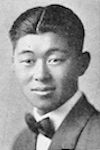
Clarence Nishizu, circa 1929
Clarence Nishizu, AHS Class of 1929
“The student that I was most impressed by was Clarence Nishizu, a 1929 graduate of Anaheim High School. The second that I found his obituary, I knew he had been a special individual. Throughout
my research, I had been lucky enough to find obituaries that gave me a small insight into the lives of these students.
“For Clarence Nishizu, I didn’t just find one obituary, but I found several newspaper articles as well. It quickly became apparent that he was a very influential member in Orange County.
“His life began humbly, as did the lives of many other Japanese Americans. His father was a farmer who had fallen so far into debt that he didn’t allow Clarence to fulfill his dream of attending UC Berkeley. So, Clarence stayed on the family farm. Through the Depression years, he succeeded in paying off his father’s debt, and they owned more land than before.
“Then in 1942, he was incarcerated in Heart Mountain. When he moved back to Orange County after the war, he was studying to be a real estate broker, but in 1966, he became the first Japanese American Orange County Grand Jury foreman.
“Such accomplishments made him an incredible individual, but it was also the little things that impressed me. There was a quote from one of the articles I read about him that read, ‘When people were kind to him, he returned the kindness in perpetuity, taking them flats of fruit or other gifts long after they’d forgotten the favor they’d done him.’
“The love and appreciation that the people in his community felt for him were clear in both his obituary and any article that mentioned him. Words like a charmer, determined, ingenious, charismatic, colorful, tenacious, kind and generous were all words used to describe him. He was a person who was so loved and so inspiring that I am sorry I will never have the opportunity to meet him.”
— Kassandra Priego
Clarence Iwao Nishizu was active in the Orange County and Los Angeles County Japanese American communities as both a businessman and philanthropist. He founded the Orange County Chapter of the JACL and helped start four other JACL chapters in Southern California: Riverside, San Gabriel, North San Diego County and SELANOCO. He was president of the SELANOCO JACL from 1975-76.
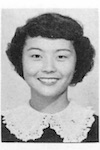
Janet Fukuda
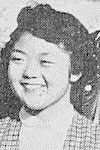
Lou Ann Fukuda
Janet and Lou Ann Fukuda, AHS Class of 1952 and 1954
“The students who impressed me the most were the Fukuda sisters, Janet and Lou Ann. They were so amazingly educated, and it impressed me so much because this is a time when women were not pursuing college degrees and having careers. Yet, Janet went on to be a dental hygienist and graduated from USC, and Lou Ann graduated from UC Berkeley.
“It amazed me how involved and dedicated they were as well as to their culture, with both sisters having joined Japanese American organizations. They were both old enough to have remembered their Poston experience to some extent, and the fact that they made sure that they would preserve the Japanese American legacy and not forget their heritage made their story even more beautiful to me.”
— Natalie Olivares



